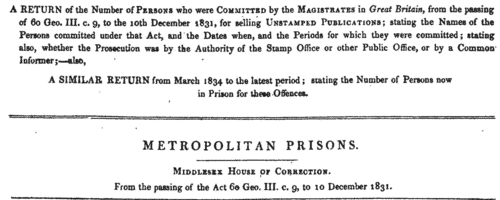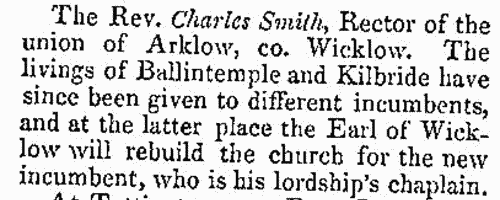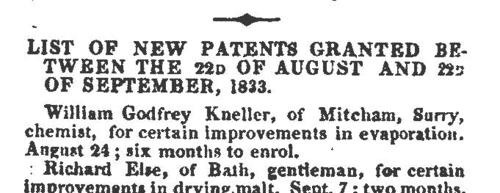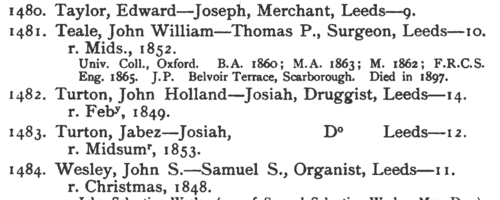Add this eBook to your basket to receive access to all 5,441 records. Our indexes include entries for the spelling robinson. In the period you have requested, we have the following 5,441 records (displaying 2,431 to 2,440): These sample scans are from the original record. You will get scans of the full pages or articles where the surname you searched for has been found. Your web browser may prevent the sample windows from opening; in this case please change your browser settings to allow pop-up windows from this site. Voters in the Eastern Division of Norfolk, for the parish of Roydon, near Diss
(1832)
Under the Reform Act of 1832, the County of Norfolk was allotted four Members of Parliament, being two Knights of the Shire for the Eastern Division and two for the Western. The Eastern Division included the hundreds of Blofield, Clavering, Depwade, Diss, Earsham, North Erpingham, South Erpingham, Eynsford, East Flegg, West Flegg, Forehoe, Happing, Henstead, Humbleyard, Loddon, Taverham, Tunstead and Walsham. The franchise was available to freeholders worth 40s a year or over; copyholders and long leaseholders of £10 or more; short leaseholders and tenants of £50 or more: but limited to adult males. Voting took place on 20 and 21 December 1832. This poll book lists the voters for each parish, with the votes cast. Voting was not compulsory, and non-voters are not listed. Each voter had two votes: the votes are indicated in the columns C. (Lord Henry Cholmondeley, 2852); P. (Nathaniel William Peach, 2960); K. (Hon. George Keppel, 3261); and W. (William Howe Windham, 3304). The voters were not necessarily resident in the parish, but derived their franchise from the land there; so some of the names have addresses outside the parish. After the name there may appear the abbreviations cop. for copyholder; oc. for occupier; or le. for leaseholder: the rest are freeholders or annuitants. | Sample scan, click to enlarge

| Voters in the Eastern Division of Norfolk, for the parish of Tibenham, near Tivetshall
(1832)
Under the Reform Act of 1832, the County of Norfolk was allotted four Members of Parliament, being two Knights of the Shire for the Eastern Division and two for the Western. The Eastern Division included the hundreds of Blofield, Clavering, Depwade, Diss, Earsham, North Erpingham, South Erpingham, Eynsford, East Flegg, West Flegg, Forehoe, Happing, Henstead, Humbleyard, Loddon, Taverham, Tunstead and Walsham. The franchise was available to freeholders worth 40s a year or over; copyholders and long leaseholders of £10 or more; short leaseholders and tenants of £50 or more: but limited to adult males. Voting took place on 20 and 21 December 1832. This poll book lists the voters for each parish, with the votes cast. Voting was not compulsory, and non-voters are not listed. Each voter had two votes: the votes are indicated in the columns C. (Lord Henry Cholmondeley, 2852); P. (Nathaniel William Peach, 2960); K. (Hon. George Keppel, 3261); and W. (William Howe Windham, 3304). The voters were not necessarily resident in the parish, but derived their franchise from the land there; so some of the names have addresses outside the parish. After the name there may appear the abbreviations cop. for copyholder; oc. for occupier; or le. for leaseholder: the rest are freeholders or annuitants. | Sample scan, click to enlarge

| Voters under the £10 franchise in Ripon
(1832)
A poll for two burgesses to serve in parliament for the borough of Ripon was taken on 11 December 1832, the candidates being sir Charles James Dalbiac (D.), Thomas Kitchingman Staveley esquire (S.), William Markham esquire (M.) and Joshua Samuel Crompton esquire (C.). This poll book lists all voters alphabetically in three sections - voters under the £10 franchise (copyholders and long-leaseholders of property of up to £10 per annum); voters resident in Bondgate; and voters under the burgage franchise. There is also a list of unregistered voters who tendered votes, and a list of neutral voters. | Sample scan, click to enlarge

| Gaoled Newspaper Vendors in Kirkdale House of Correction
(1822-1833)
The 1815 Stamp Act increased the tax on newspapers to fourpence a copy. Many radical newspaper publishers and the booksellers and newsagents who sold their popular papers ignored the law, and were liable to suffer prosecution either by authority of the Stamp Office which regulated the tax or by a common informer. In 1836 the House of Commons ordered these returns to be made from each prison, giving details of the convictions that had been made under the Act. The returns are not entirely consistent from one gaol to another, but most give names, dates, and period of imprisonment. | Sample scan, click to enlarge

| Deaths, Marriages, News and Promotions
(1833)
Death notices and obituaries, marriage and birth notices, civil and military promotions, clerical preferments and domestic occurrences, as reported in the Gentleman's Magazine. Mostly from England and Wales, but items from Ireland, Scotland and abroad.
| Sample scan, click to enlarge

| Deaths, Marriages, News and Promotions
(1833)
Death notices and obituaries, marriage and birth notices, civil and military promotions, clerical preferments and domestic occurrences, as reported in the Gentleman's Magazine. Mostly from England and Wales, but items from Ireland, Scotland and abroad.
| Sample scan, click to enlarge

| Patentees of New Inventions
(1833)
Lists of patents granted from 22 March to 22 September 1833: giving full name of the patentee, address and occupation; a brief description of the innovation, period of protection, and date of grant. | Sample scan, click to enlarge

| Subscribers to the Charity Schools of St Andrew Holborn
(1833)
The Charity Schools of St Andrew, Holborn, were supported by private benefactions and subscriptions. This list of the subscribers, for 1833, gives their names and addresses and the amount of their subscription. Apart from a handful of life subscribers, who had paid a substantial lump sum, the payments were annual. The lefthand column shows the year at which their subscriptions commenced. Full names are given in some cases, but often christian names are omitted or indicated only by initials. The addresses include house numbers in many instances. Those who had served the office of Steward are indicated by a dagger. | Sample scan, click to enlarge

| Visitors to Buxton, Derbyshire
(1833)
The Derby Mercury of 14 August 1833 carries this list of arrivals at Buxton. | Sample scan, click to enlarge

| Boys entering Leeds Grammar School
(1834)
The admission books for Leeds Grammar School from 1820 to 1900 were edited by Edmund Wilson and published in 1906. The series of registers is almost complete for the period, there being in addition admission registers for the Lower (or Commercial) Department from 1856 to 1865, and lists of boys in the school in 1856, and in the Commercial Department in 1861. The entries are arranged by date or term of admission: a sequential number is given first, then surname, christian name, and, after a dash, father's christian name, occupation, and address; another dash, and then the age of the boy at admission, and often his year of leaving (with the abbreviation r. for 'removed' or 'left'). r.* means left without notice; (o) or S. or Stranger or Foreigner indicates a boy not on the foundation. The editor was unable to divine the meaning of the abbreviation (Q) or the asterisks prefixed to most entries in 1856 to 1860, but dutifully copies them into the text. In smaller type he then proceeds, where possible, to add some information about the boy's subsequent career. | Sample scan, click to enlarge

|
Research your ancestry, family history, genealogy and one-name study by direct access to original records and archives indexed by surname.
|











